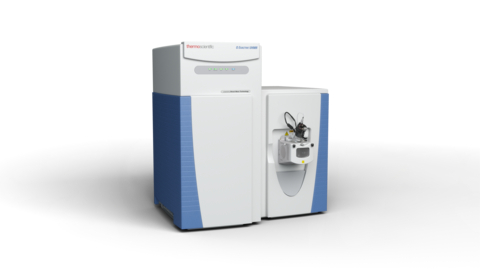
MINNEAPOLIS– Thermo Fisher Scientific Inc., the world leader in serving science, is providing proteomics and biopharmaceutical laboratories working in drug discovery and R&D applications with an innovative mass spectrometry solution that, for the first time, unlocks the ability to clearly decipher complex mixtures of large macromolecules.
The Thermo Scientific Direct Mass Technology mode augments Thermo Scientific Q Exactive UHMR Hybrid Quadrupole-Orbitrap mass spectrometers with charge detection capabilities, allowing direct mass determination of hundreds to thousands of individual ions in a single spectrum. As a result, laboratories can measure mass for complex heterogeneous mixtures of multiple charged components, unlocking new and rich insights into proteoforms, biotherapeutics and next-generation drug modalities.
“Direct Mass Technology mode combines charge detection with our trusted high-resolution accurate mass Orbitrap measurements to achieve results unattainable by current ensemble measurement techniques,” said Iain Mylchreest, vice president, research and development, analytical instruments, Thermo Fisher Scientific. “By dissolving the complexity barriers inherent to other approaches, we’re enabling a wealth of investigations that were once firmly out of reach — from resolving heavily modified proteoforms to revealing small changes in large antibody-drug conjugate complexes, to name but a few.”
Thermo Fisher Scientific is showcasing the new Direct Mass Technology mode during the 70th American Society for Mass Spectrometry (ASMS) Conference on Mass Spectrometry and Allied Topics, being held June 5-9, 2022 in Booth 400 at the Minneapolis Convention Center, Minneapolis, Minnesota and at the Hilton Minneapolis Grand Ballrooms E, F, G.
Neil Kelleher, director, Northwestern Proteomics & the Chemistry of Life Processes Institute, Northwestern University, said “The differences seen when moving from traditional mass spectrometry to this game-changing direct mass technology are profound. We’ve gone from having no data or uninterpretable data to having rich spectra laying bare proteoform complexity. With such solutions, we no longer need to be overwhelmed by the complexity of the human proteome. This technology makes clear that, ultimately, we can build tools that match the complexity and scale of our biology.”

